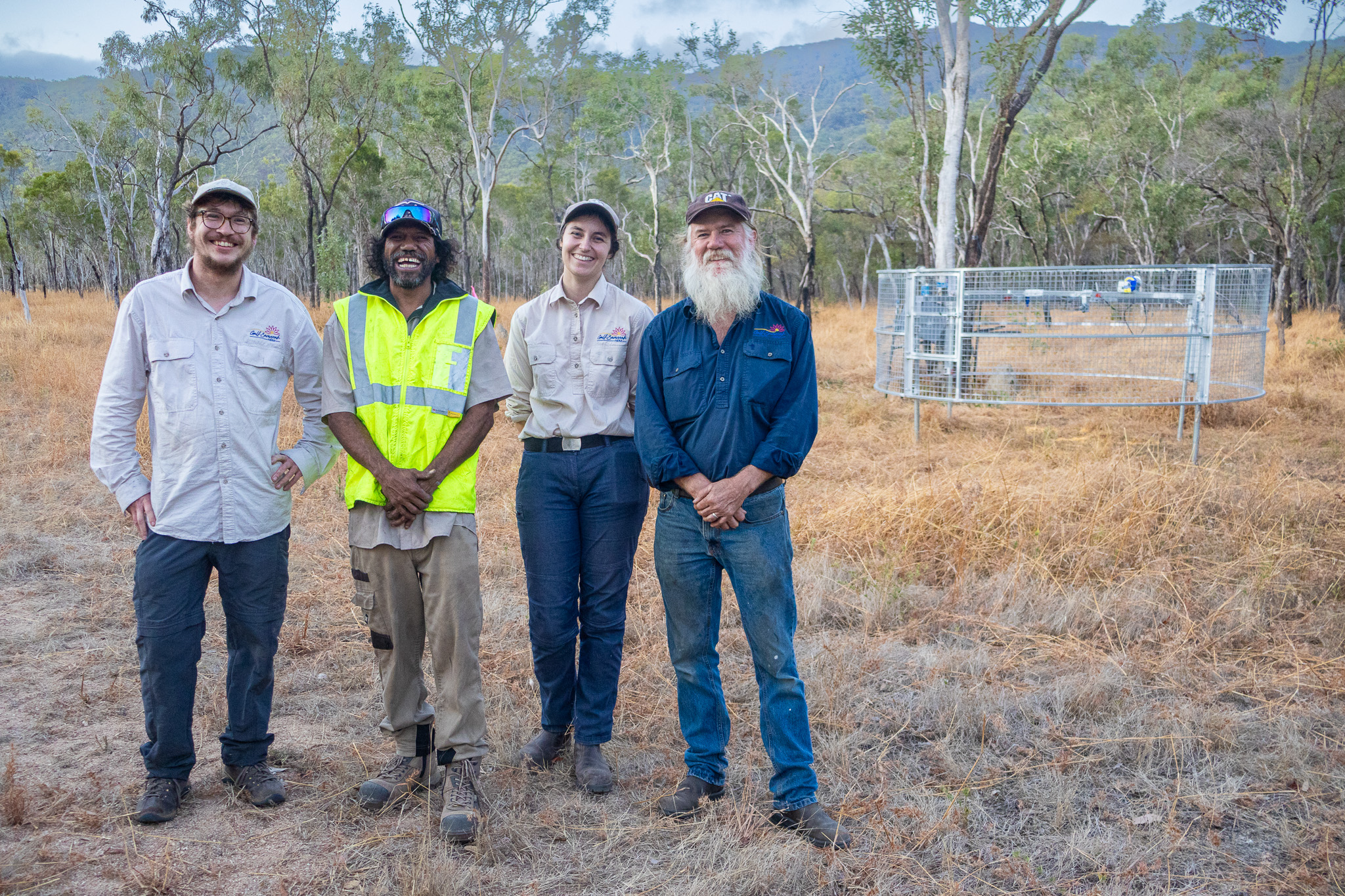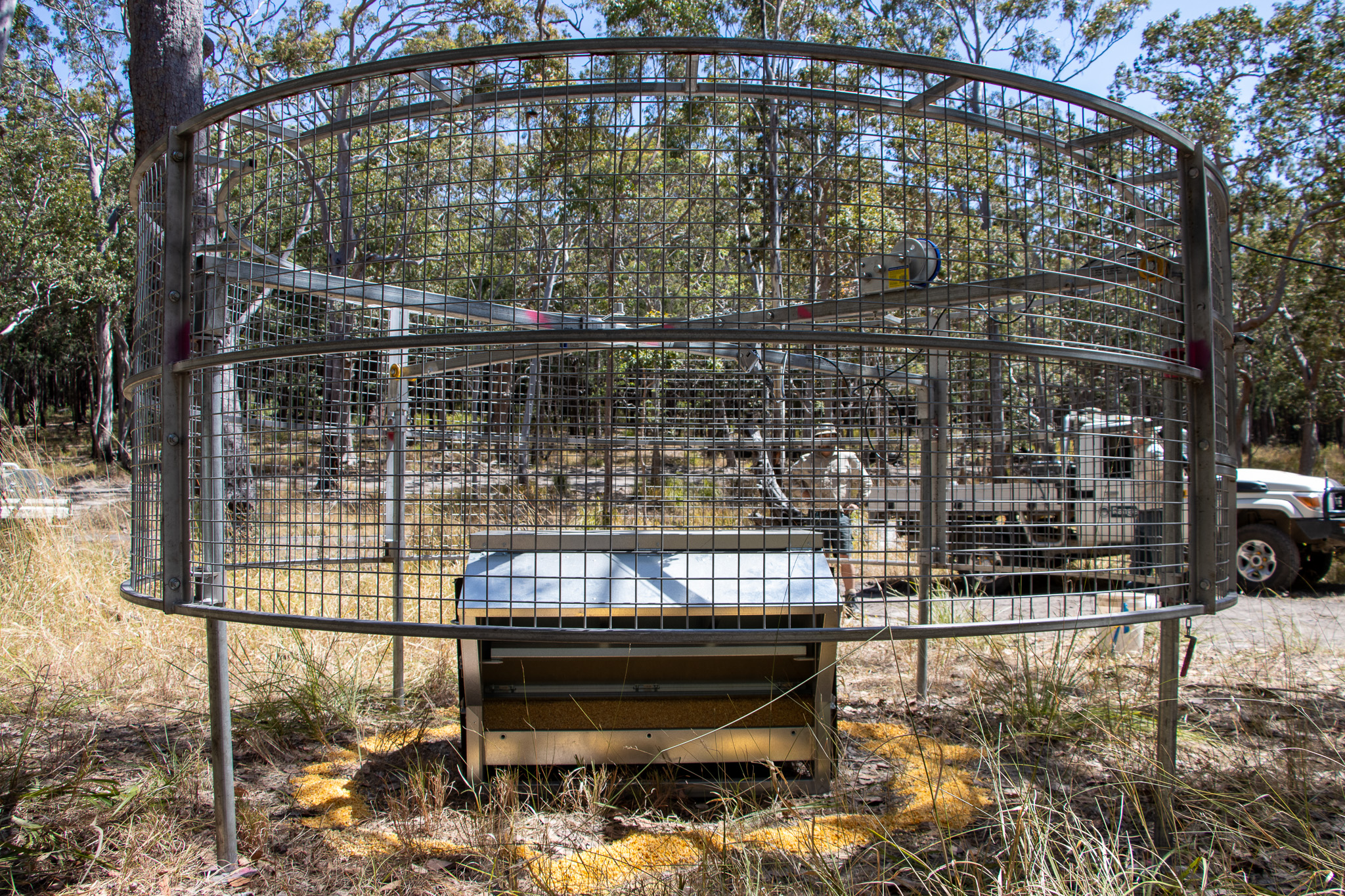With the support of Queensland Parks and Wildlife Service (QPWS) rangers, GSNRM’s biodiversity team has returned to Mt Spurgeon armed with new tools to combat one of Australia’s greatest threats to native wildlife: feral pigs.
Three remotely operated traps have now been deployed at key sites across the national park, providing a safer, more effective way to reduce pig numbers while minimising impacts on non-target species.
GSNRM’s feral pig coordinator and biosecurity officer Scott Morrison said the destructive pests are notorious for the scale and variety of damage they cause.
‘Feral pigs will eat anything: sea turtle nestlings, grains, pawpaws, mangoes, lambs, kangaroos, even calves as they’re being born,’ Scott said.
’They’re a pretty ferocious predator — the sky’s the limit for what effect they have on many levels.’
As well as predation, feral pigs cause widespread soil disturbance, destroy native vegetation, foul waterways, and spread diseases that can devastate livestock and wildlife alike. Their impact is felt across Queensland, costing agriculture and conservation millions of dollars each year.
These new remote traps use motion-sensor cameras and mobile technology to allow rangers and the GSNRM team to monitor sites and trigger the enclosures only when entire groups of pigs are inside. This improves animal welfare outcomes and maximises the effectiveness of each capture.
GSNRM will continue to work alongside QPWS to track the results over coming months.

This project is funded by the Australian Government Natural Heritage Trust and delivered by Gulf Savannah NRM, a member of the Commonwealth Regional Delivery Partners panel.

